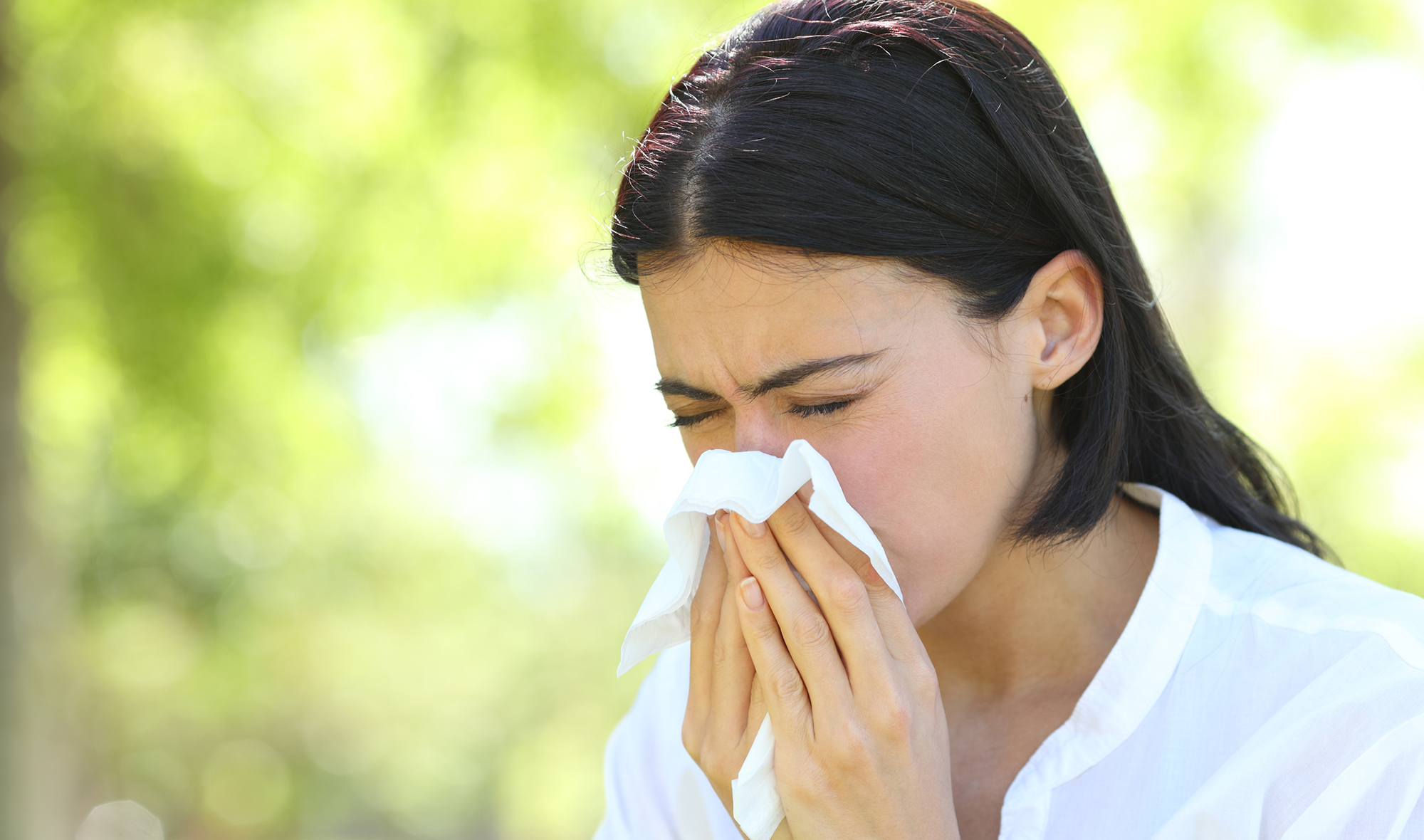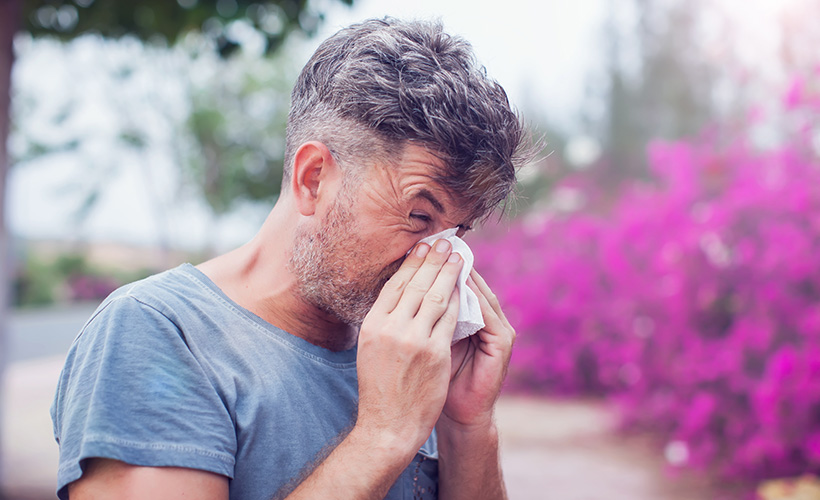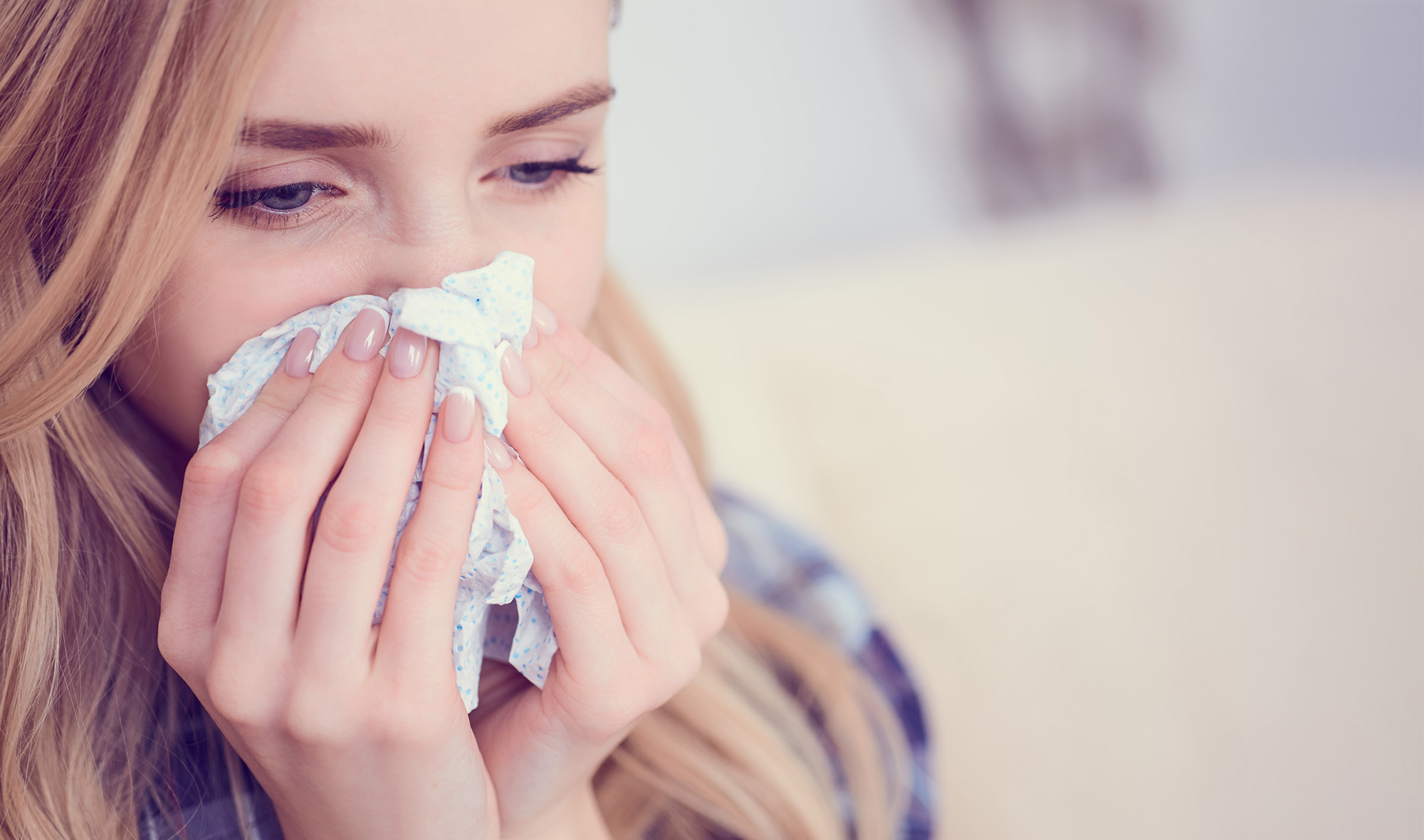Allergies occur when the immune system overreacts to normally harmless substances in the air we breathe and food we eat.
Some allergy triggers are easier to identify, and avoid, than others. The most common is pollen, which lets fly in spring, while mould spores, dust mites and pet dander aspire to torment us all year round. These airborne triggers are all known to cause allergic rhinitis, or ‘hayfever’, characterised by sneezing, a runny nose, headache and itching of the nose, eyes, roof of the mouth and back of the throat. Airborne substances can also cause wheezing or allergic asthma.
Here are our top tips for avoiding these everyday allergens and the foggy haze they propel us into.
For pollen allergy:
Pollen is produced by plants for reproductive purposes. Depending on the type of plant, pollen will either travel through the air in order to fertilise other plants, or be carried there by bees and other insects. It’s the airborne pollen that often finds its way into your home, car, clothes, and even your nose and throat, instead of reaching its rightful destination. Pollen counts are at their highest in the morning, after a thunderstorm and worse on hot, sunny days. With that in mind, you could…
- Plan outdoor activities for the afternoon.
- Have a shower after time spent outside (to wash off pollen from your skin and hair).
- Avoid hanging clothes and bedsheets outside to dry, as they’ll collect pollen.
- Consider planting a ‘low-allergen’ garden made up of brightly-coloured flowers that should attract bees and other insects to transfer pollen (so that it doesn’t become airborne).
For mould allergy:
Mould is a fungus that releases tiny spores into the air, which, like pollen grains, can attach to your skin and clothing, or enter your home through open windows and doors.
Mould thrives in warm, humid environments, and can be found outside in moist, shady areas or under dying vegetation, as well as inside a home, in bathrooms, basements, window sills and anywhere that harbours moisture. Mould can also grow in wardrobes (leaving a musty smell on clothes and linen) when cupboards are too crammed or inadequately ventilated. To prevent mould, you should…
- Prevent high levels of humidity in the home by using dehumidifiers and extractor fans – humidity should be kept below 40%.
- Don’t allow towels to remain damp, either between use or after a wash; dry them immediately so they don’t invite mould.
- Limit numbers of indoor plants, as the soil can attract mould.
- Attend to any leaks seeping through the ceiling or walls, by checking the roofing, spouting and piping in your house.
- In the garden avoid using mulch, including bark, sticks, dried leaves and compost – all of which retain moisture and harbour mould.
- Eliminate mould as soon as you see it, with appropriate bleaches and inhibitors, so it doesn’t reproduce by releasing more mould spores into the air.
For pet allergy:
Most pet allergies are associated with cats – a pet most of us would rather snuggle up with, than avoid. People aren’t so much allergic to cat hair, but the proteins found in their skin, saliva and urine; so if you worry about cat hair on your clothes or bedding, it pays to also think about the allergens that you can’t see, such as cat dander (skin flakes) embedded in the carpet or furniture.
If removing a pet really isn’t an option, try to…
- Keep the pet out of the house if possible, or at least out of the bedroom.
- Wash your pet more frequently if your vet agrees you can.
- Vacuum carpets and furniture at least twice a week, although pet allergens are notoriously difficult to remove; removing carpet might be the easier option.
For dust mite allergy:
Dust mites live and feed off the dust in your home, which is mainly made up of the skin cells you shed every day (as well as mould spores, pet dander and other undesirables). Dust mites enjoy warm, humid environments and like to nestle in carpets, bedding and mattresses, curtains and furniture – just about anywhere they can get comfortable. If the thought of them just being there is bad enough, we hasten to add that it’s not the dustmites themselves that make us allergic, but in fact their droppings. To control dust mites…
- Remove ‘dust collectors’ from your home or at least from your bedroom – soft toys, wall hangings, knick-knacks, papers and books, decorative cushions and unnecessary shelving.
- Dust all surfaces with a damp cloth two to three times a week.
- Wash your bed linen every week in hot water to kill existing dust mites. Drying them in a hot tumble-dryer will also help.
- Use dust-proof mattress and pillow covers to provide a barrier between you and the dust mites.
- Keep your home dry – mites cannot survive in under 50% humidity.
Of course, taking all these measures won’t necessarily keep you allergy-free, but may help minimise the impact of allergens on your everyday life.
For a more fail-proof solution to your allergy woes, ask your pharmacist for an effective hayfever treatment that can relieve symptoms and prevent their onset in the first place.

















Community